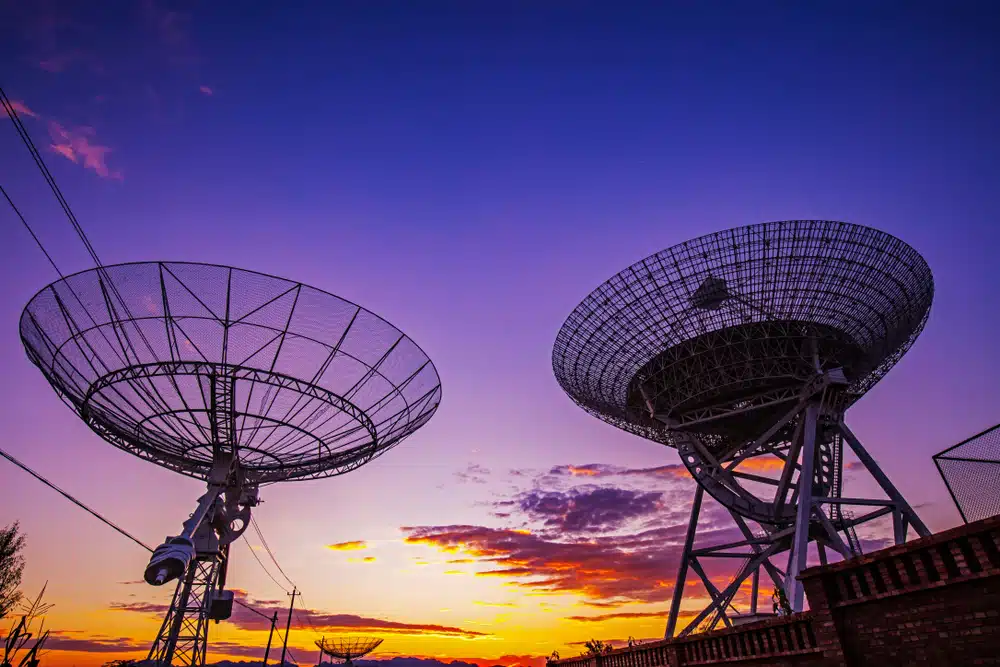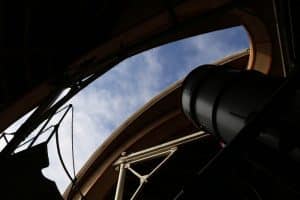The Great Cosmic Thinkers: Celebrating Famous Astrophysicists
Are you intrigued by the mystery that surrounds you in the universe? Do you find yourself unable to tear yourself away from television programs that discuss topics such as the cosmos, the solar system, comets, and stars? Do you ever find yourself wondering how you could ever unravel the mysteries of the cosmos on your own? Are you someone who frequents the planetarium that is located in your city? Are you intrigued by the lives of some of the famous astrophysicists? If you gave a resounding yes to each of the questions that were asked above, then becoming an astrophysicist is an option that you should definitely consider.
Astrophysics is a subfield of astronomy that focuses on establishing the characteristics of various celestial bodies, such as stars and planets. Since many people are now aware of the location or movements of significant celestial bodies in space, the nature of these bodies has become an attraction for many.
Numerous famous astrophysicists who have made significant contributions to this discipline of astronomy have called the United States of America their home. In this post, we’ll delve into some of the top astronomers in the United States and explore what it takes to become one.
What is Astrophysics?
Astrophysics is a subfield of space science that makes use of the principles of physics and chemistry in order to investigate the cosmos and try to comprehend our position within it.
The field investigates a variety of issues, some of which include the creation, life, and death of various things in the universe, such as stars, planets, galaxies, and nebulae. Even though the boundaries between astronomy and cosmology aren’t always clear, it has two related scientific areas as its siblings.
In the strictest possible sense:
- Astrophysics develops physical theories to explain the universe’s smallest and largest objects and structures.
- The study of astronomy involves the determination of several aspects of celestial objects, including their locations, luminosities, movements, and other attributes.
- The study of the greatest structures in the universe and the cosmos as a whole is known as cosmology.
In actuality, the three domains come together to form a close-knit family.
If you ask an astronomer about the location of a nebula or the type of light it emits, they might be the first person to respond. If you were to ask an astrophysicist about the composition of the nebula and how it came into being, they could respond. If you asked a cosmologist how the data squared with the theory that the universe was created, they would probably weigh in. Or, they could all participate in order to investigate the three questions.
What is an Astrophysicist?
An astrophysicist is a type of scientist who studies the fundamentals of light, motion, and natural forces in relation to the larger cosmos. Theoretical studies of physics are conducted by famous astrophysicists so that they can have a better understanding of the fundamental characteristics that make up the universe.
A good number of cosmologists have developed expertise in the investigation of a particular phenomenon or theory, such as black holes, the formation, and demise of stars, relativity, and motion, or the beginning of the universe.
The rules of physics and chemistry are applied in the field of astrophysics, which is a subfield of space science. Its goal is to explain the origin, life, and death of stars, planets, galaxies, nebulae, and other objects found throughout the universe. When developing contemporary explanations, astrophysicists combine their considerable understanding of mathematical and physical aspects with observable traits.
Because there is a great deal that is not known or understood about the cosmos, it is not unusual for astronomers to devote the majority of their professional lives to researching a single cosmic phenomenon. Astrophysicists investigate the workings of the cosmos, seek to understand its origins and development, and look for signs of life on planets that orbit other stars. To put it more simply, they are looking to get an understanding of the cosmos and our place within it.
Who are some of the Famous Astrophysicists in America?
Suppose you’ve ever fantasized about delving into the mysteries of the cosmos. In that case, you should be aware that being an astrophysicist demands a significant amount of time spent in observation, education, and labor. But you may begin at any age if you enroll in free online courses in astronomy and astrophysics, join an astronomy club in your area, attend local astronomy events, and stay up with the latest news in the field. In this part, you will learn about the lives of famous astrophysicists and their contributions to the field.
Neil deGrasse Tyson
Astrophysicist and scholar Neil deGrasse Tyson, who was awarded the Public Welfare Medal, hosted a number of television programs, including NOVA ScienceNow, Cosmos: A Spacetime Odyssey, and Star Talk, among others. He is the director of Hayden Planetarium and was a contributor to the decision to remove Pluto’s designation as the ninth planet in the solar system. In addition, he is the author of the monthly piece known only as “Merlin.”
Carl Sagan
Carl Sagan, an astrophysicist, and novelist won both the Pulitzer Prize and the Emmy Award for his work as a co-writer on the television series Cosmos: A Personal Voyage. The movie version of his novel, Contact, was adapted from his novel. He was well-known for his extensive research on extraterrestrial life, having taught at prestigious universities, and authored a vast number of scientific publications and books.
Subrahmanyan Chandrasekhar
Although Subrahmanyan Chandrasekhar is remembered for his many contributions to the field of astrophysics, arguably the one for which he is most recognized is his work on the evolution of big stars. It is now known as the Chandrasekhar limit, and it played a significant role in completing our understanding of black holes, neutron stars, and supernovas. In addition to being a prolific writer, he did major research on the transfer of energy through radiation in stellar atmospheres and convection on the surface of the sun.
Allen Hynek
Allen Hynek was skeptical when the United States government tasked him with the responsibility of solving the mystery of inexplicable sightings of flying objects and gave him the burden of finding a solution. Later on, he established himself as the pioneer in the field of scientific investigation of such sightings. In addition, he developed the classification system known as “Close Encounters” for the purpose of researching UFOs.
Vera Rubin
Among the famous astrophysicists is Vera Rubin. Rubin is best known for her groundbreaking discoveries on galaxy rotation rates, her ground-breaking work establishing the presence of dark matter, and her lifelong advocacy for women in science. Her work has been cited in numerous scientific publications. Her research on the galactic rotation curves yielded compelling evidence for the presence of a mysterious substance known as dark matter. In her honor, an observatory in Chile bears her name: the Vera C. Rubin Observatory.
Cecilia Payne-Gaposchkin
Cecilia Payne-Gaposchkin was brought up by her mother on her alone after the passing of her father when she was only four years old. Cecilia, who possessed an extraordinary amount of talent, attended Cambridge but was denied a degree due to the fact that she was a woman. Later, she attended Harvard, where she challenged conventional wisdom by suggesting that the primary components of stellar composition were hydrogen and helium.
Max Tegmark
Max Tegmark was born to math professor Harold S. Shapiro, and as he grew up, he went on to co-found the Future of Life Institute, which received support from Elon Musk. The cosmologist, physicist, and machine learning expert who teaches at MIT is the author of a book on artificial intelligence titled Life 3.0. He is also an expert in the fields of machine learning and cosmology.
Lawrence M. Krauss
The American-Canadian theoretical physicist Lawrence M. Krauss is the author of multiple books that have been hugely successful, and he has also lectured at prestigious universities including ASU and Yale. After becoming well-known for his work on zero-energy states and dark energy, he was later accused of sexual misconduct and, as a result, lost his position as director of the Origins Project at Arizona State University.
Michael Foale
Michael Foale was not only the first person from the United Kingdom to go on a spacewalk, but he was also the only astronaut in NASA history to have served on missions aboard both the Mir and the International Space Station. Because his father was a pilot in the Royal Air Force, he had a lot of experience around the world. In an automobile accident that occurred in Yugoslavia, he was the only one to survive.
Amy Mainzer
Amy Mainzer, an astronomer who specializes in asteroid detection, has been associated with NASA’s NEOWISE mission since it began. The alumnus of Stanford and Caltech currently works as a professor at the Lunar and Planetary Laboratory at the University of Arizona. She has also made appearances in a number of documentaries and in the television series The Universe, which airs on the History Channel.
George F. Smoot
Among the famous astrophysicists is George F. Smoot, a physicist who won the Nobel Prize for his work on the “Big Bang” model. He is probably best recognized for his contributions to the field together with his fellow Nobel laureate John C. Mather, who assisted NASA in the development of the COBE. In addition to that, he has been a guest on a large number of different television shows, and one of those appearances earned him a million dollars.
What Does it Take to Become an Astrophysicist?
We now know from above the lives of some of the famous astrophysicists in the country so, what does it take to become an astrophysicist? Particularly for bright and ambitious high school students who are interested in the fields of astronomy and physics, the prospect of making a living in these fields as a career can be intimidating.
It is not difficult to develop an interest in astronomy, particularly when one is a child. After all, what could be more fascinating than enormous black holes, an abundance of stars and planets, and whirling nebulas and galaxies? And the things that can’t be accessible through things like online videos or books can be appreciated through the straightforward and direct pleasure that comes from a night that is clear and dark.
The first thing you should do when selecting a career path is to ask yourself if you are willing to make the sacrifices necessary to pursue that path. You don’t want to squander your time carrying out activities that aren’t enjoyable to you. The steps to take to become an astrophysicist are explained in the following paragraphs.
Get Involved Early
Participating in activities held at planetariums, becoming a member of astronomy organizations, and interacting with people who are employed in the field are all excellent ways to become acquainted with and build an awareness of the scientific community on an introductory level.
High School Diploma
Students who want to enhance their chances of getting into a good institution should focus on improving their science and math skills while they are still in high school. This will help them acquire a diploma.
Bachelor’s Degree
As a result of the fact that most astrophysicists hold a master’s or doctoral degree, bachelor’s degrees in the discipline are not nearly as widespread as they formerly were. Students who intend to continue their education and achieve a graduate degree typically begin their academic careers by earning a Bachelor of Science degree in Astronomy, Physics, or another discipline within the same general scientific domain.
Classes in general chemistry, calculus, linear algebra, and computer science, all of which are directly applicable to astrophysical research, make up the foundational prerequisites.
Students should select a bachelor’s degree program that allows them to participate in internships and/or fieldwork experiences, if at all possible. Bachelor’s degree holders have a fighting chance of being hired for various entry-level employment in the astronomy industry.
Undergraduate Research Opportunities
The field of astrophysics places a strong emphasis on research. Because of this, undergraduate students are strongly encouraged to take part in research programs during the summer in order to obtain practical experience in the research process.
Colleges and universities, in addition to governmental organizations such as the National Science Foundation in the United States and the Foundation for Student Science and Technology in Canada, frequently provide research programs in astronomy and other areas of general science.
Graduate Degree
The US Bureau of Labor Statistics (BLS) reports that the majority of physicists and astronomers, including astrophysicists, hold a doctoral degree. While Master’s Degrees in Astrophysics do exist and may qualify holders for limited research assistant and consulting positions, it is essential to note that most physicists and astronomers, including astrophysicists, hold a doctoral degree.
Independent study is emphasized throughout doctoral degrees in astrophysics, and students ultimately complete a dissertation. In most cases, they also necessitate the successful completion of required coursework in a variety of disciplines, including physics, astronomy, mathematics, computer science, and statistics. There is a possibility that certain educational institutions will provide a combined master’s and doctoral degree in the field.
Many astrophysicists start their careers in brief postdoctoral research positions after completing their doctoral degrees. These positions typically last between three and six years and are intended to be transitory. During their time as postdoctoral researchers, students are given the opportunity to work alongside seasoned scientists, from whom they gain a deeper understanding of their own fields of expertise and a broader perspective on other study domains.
Doctoral candidates in astrophysics may choose to focus their research on one of the following areas:
Theoretical Astrophysics
- Solar system formation and evolution
- Stellar dynamics and evolution
- Galaxy formation and evolution
- Magnetohydrodynamics; large-scale structure of matter in the universe
- Origin of cosmic rays
- General relativity
- Special relativity
- Quantum and physical cosmology, including string cosmology and astroparticle physics
Observational Astrophysics
Radio astronomy – the study of radiation with a wavelength greater than a few millimeters
Infrared astronomy – the study of radiation with a wavelength that is too long to be visible to the naked eye but is shorter than radio waves
Optical astronomy – the branch of observational astronomy that uses telescopes to observe or photograph celestial objects
Ultraviolet, X-ray, and gamma-ray astronomy – the study of very energetic processes such as binary pulsars, black holes, magnetars, and many others; these kinds of radiation do not penetrate the Earth’s atmosphere well
Want to learn more about your chances of becoming one of the most famous astrophysicists in the country? You’ve come to the right place. At AdmissionSight, we have over 10 years of experience guiding students through the competitive admissions process.
AdmissionSight can help you put your best foot forward when applying to college this fall. Contact us today for more information on our services.









































